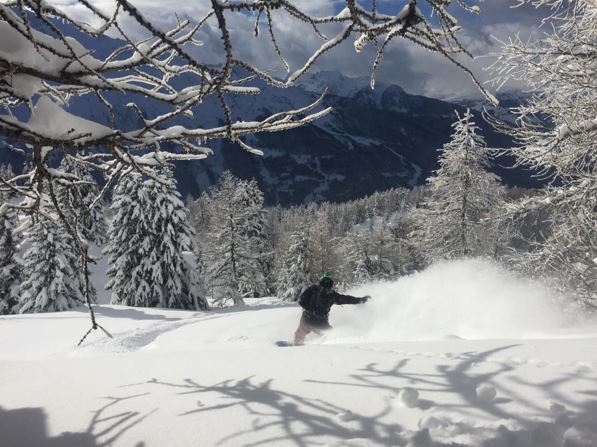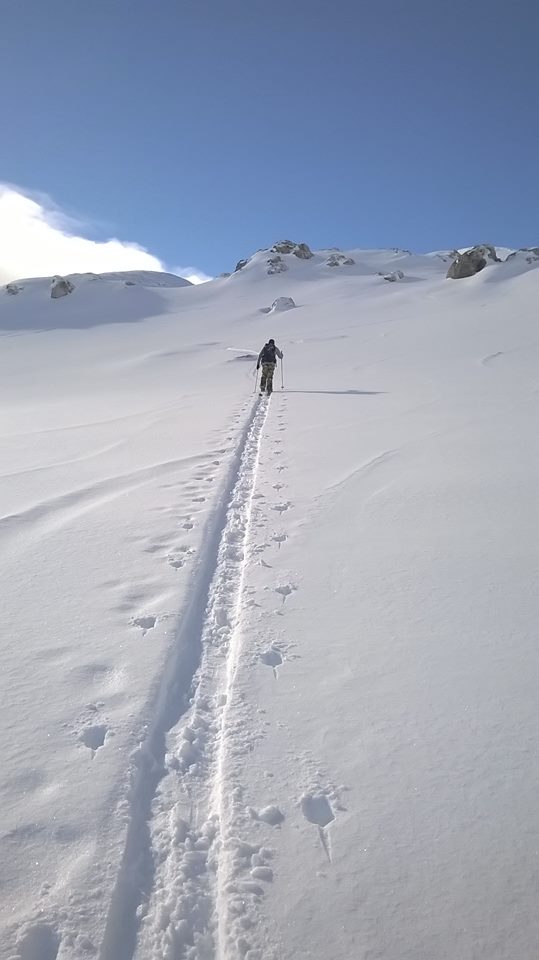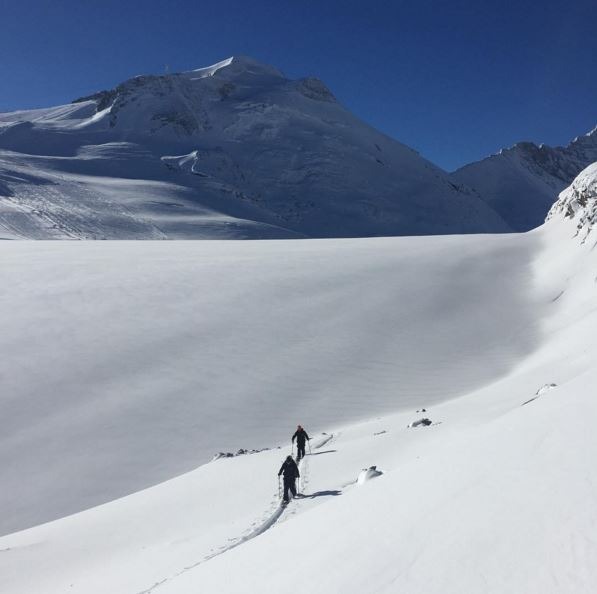Uncategorized
Our co-founder Neil McNair talks avalanche safety with Snow+Rock
Snow+Rock’s Daisy Maddinson recently chatted to McNair Shirts co-founder Neil McNair about avalanche safety and the science of snowpacks. (The interview first appeared on Snow+Rocks website).
With a slow start to the winter season and following recent weeks of heavy snowfall, snowpacks across Europe can be unstable and prone to lethal avalanches. Whilst you should never head into the backcountry without full backcountry equipment and a qualified local professional, we’re of the belief that avalanche safety starts with understanding snowpacks and preventing avalanches before they occur.
Experts will make extensive measurements and observations when assessing the likelihood of a slope avalanching, but there is a large proportion of skiers/snowboarders that will happily venture off-piste without any or little knowledge, putting themselves and others at unnecessary risk.
Whilst reading snowpacks based on conditions alone is by no means enough evidence to make an informed decision when heading off-piste, it can tell us basic information on when it’s just not worth the risk. Safety is always the number one objective when accessing snowpacks, and looking at the structure and stability should be a priority when thinking about those fresh tracks.
We chat with Neil McNair, backcountry legend, coach and owner of McNair Snowsports, about what to look for.

Weather:
One of the biggest misconceptions of snow stability is only needing to look at fresh snow, when the weather between snowfall events can also affect the snowpack immensely. For this reason it’s useful to review your local avalanche forecast frequently between trips. The three main factors to check for when looking at stability are; new precipitation, wind and heat exchange at the snowpack surface.
- New precipitation. Often avalanches can happen during or shortly after a storm, due to snowpacks taking time to adjust to a fresh snow loading.What constitutes as enough time for fresh snow to merge into existing snowpacks is hugely variable and is influenced by slope factors such as aspect (direction) and elevation.Other factors influencing how favourably new snow can be incorporated to existing snowpacks is its ability to bond, and the density of the snow; for example new snow may struggle to stick to a slab or crust layer of snow, and snowfall which is more dense than existing lighter layers may make them more prone to slides.
- Wind is one of the most important factors influencing the stability of a snowpack, and its likelihood of sliding.Simply put, wind has the ability to redistribute snow from its original resting place. This often moves snow from ridgelines to lee slopes, or creates overhangs called cornices which can fall and trigger avalanches. Cornices can often break further back than expected and should be given a wide birth when heading into the backcountry.
- Heat exchange at the surface. The radiation balance at the surface of snowpacks can hugely influence the stability of slopes.The most important factors here are the short-wave radiation (i.e. sunlight) absorbed by the snow causing melt, and long-wave cooling causing refreezing. These can create very steep temperature gradients and weak surface layers formed from recrystallized snow and crusts.The amount of short-wave radiation influencing a slope is controlled by albedo (the ratio of absorbed vs. reflected radiation – most usually regulated by snow colour as darker snow will absorb more radiation). The heat exchange of the surface can also change snow crystals further down in the snowpack, affecting the stability of layers below the surface.
Terrain:
Terrain plays a huge part in the stability of snowpacks and major things to factor in are the slope altitude, aspect and incline.
- Altitude will affect the type of precipitation falling on the slopes.
- Aspect can influence the amount of sun a slope receives, and therefore the likelihood of snowmelt. Generally speaking north-facing slopes are the most likely to avalanche during the middle of winter whilst south-facing slopes become more dangerous in the spring and through sunny days as the sun begins to rise higher in the sky.
- Slope incline can be attributed as one of the most important factors to consider when looking at avalanche risk. Whilst slides have been reported on slopes anywhere from 25-60 degree angles, the most dangerous are those between 30-45 degrees.

Neil’s Top Tips for Avalanche Safety:
- Check the avalanche forecast. Most avalanche fatalities happen when the risk is 3 out of 5 – just because it’s a middle number doesn’t mean it’s safe!
- Look for signs of any other avalanche activity – particularly on slopes of a similar aspect, altitude and gradient. This can help you make an informed decision.
- Just because you have safety equipment doesn’t mean you’re safe. Regularly practice single and multiple transceiver searches and a good digging technique.
- Talk to the local ski patrol – they will always offer you sound advice.
- Always plan your route and identify any hazards or terrain traps before you set off. How you approach a slope tactically can help you manage the risks more effectively.
- Never ski or ride alone when venturing off-piste.
- If you have a sense of unease or a bad feeling in your gut, listen to it and turn back!
In addition to these observations, digging a snow pit and searching for weak layers of snow (as previously discussed) is a good way of assessing risk. Avalanches will most likely occur when a layer of heavier snow settles on a weak layer; if the weak layer is disturbed the top will loosen and slide downhill, so ensure you check previous conditions as well as current ones.
Remember, this guide is by no means comprehensive and every mountain is different. Ensure you are fully equipped with avalanche awareness, backcountry equipment and a qualified professional before venturing out!
Glossary of terms:
Albedo: the proportion of light or radiation that is reflected by a surface.
Cornice: an overhanging mass of hardened snow at the edge of a mountain precipice.
Aspect: aspect is the compass direction that a slope faces.

